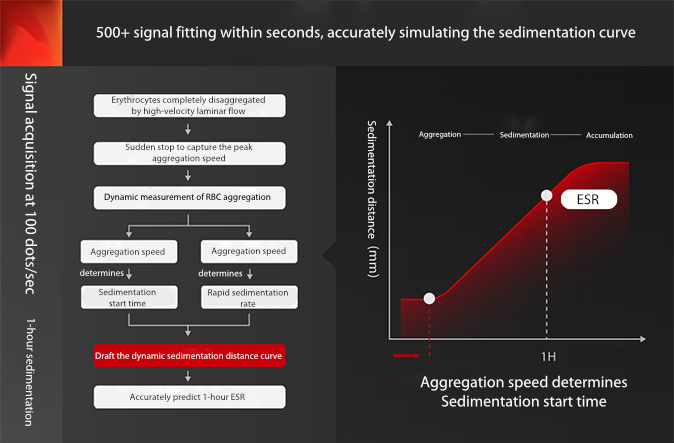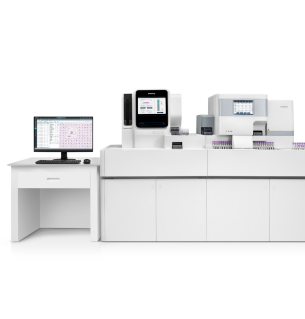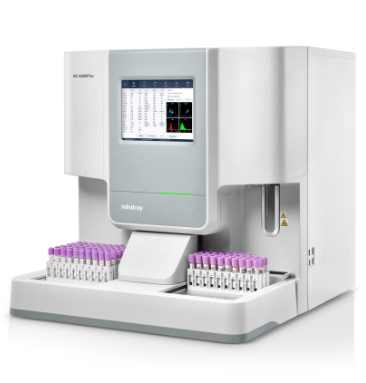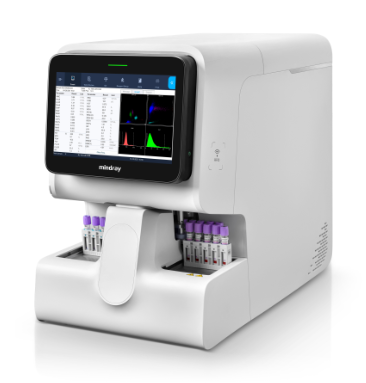About ISLH
Founded in 1992, the International Society for Laboratory Hematology (ISLH) is a premier organization aimed at advancing international education, charting new directions, and driving innovation in laboratory hematology. The official journal of the ISLH, "The International Journal of Laboratory Hematology", is the leading journal in hematology. In 2005, Dr. Berend Houwen, the founder of the ISLH, led the establishment of the ISLH 41 criteria for action following automated CBC and WBC differential analysis. These rules become the standards and guidelines for laboratory hematology, greatly enhancing the accuracy and reliability of the test results.
Advanced Hematology Technology
for Laboratory Testing Challenges
ISLH 2023, the XXXVIth International Symposium on Technical Innovations in Laboratory Hematology, was held in New Orleans, USA from May 11–13, 2023. Scientists, clinicians, IVD enterprises, and regulatory representatives all gathered to discuss the latest trends and innovative applications in laboratory hematology analysis.


This year, Mindray was invited to demonstrate to global experts its cutting-edge technological innovations and how the Mindray Solution can help address the challenges in hematology analysis.
Artificial Neural Network Model Based on Blood Cell Parameters: Screening of Malignant Hematological Diseases from Peripheral Blood Samples
Diagnosis of malignant hematological diseases often involves complicated and time-consuming tests such as morphology, immunology, cytogenetics, and molecular biology. However, timely early screening for malignant hematological diseases is essential for effective treatments.
In this study, eight machine-learning models for screening malignant hematological diseases were constructed using routine blood and blood cell morphological parameters collected from 1693 patients in multiple tertiary hospitals in China, and the basic performance and clinical detection efficacy of each model were validated. The artificial neural network (ANN) model was found to be excellent by comparison, with a recognition accuracy, sensitivity, and specificity of 85.0%, 84.0%, and 86.0%, respectively, for the validation set. The ANN model can effectively screen out patients with malignant hematological diseases from peripheral blood samples, helping patients to receive early treatment for malignant hematological diseases, especially in primary hospitals where treatment measures are not well established.
Collaborating hospitals: Nanfang Hospital of Southern Medical University, West China Hospital of Sichuan University, Tongji Hospital Affiliated to Tongji Medical College of Huazhong University of Science and Technology, and the First Affiliated Hospital of Soochow University
Co-authors: Dehua Sun, Yongjian He, Zhigang Mao, Chi Zhang, Ziyong Sun, Dandan Liu, and Jun He
AI Review: Blood Smear Review Rules Based On Scattergram Features
Every hematology testing laboratory should establish its own blood smear review rules suitable for its specific conditions, aiming to reduce the review rate as much as possible without affecting the quality of reports. Due to the complexity of establishment and excessive investment, individual laboratories are unable to construct individual high-quality review rules.
This study aims to use artificial intelligence algorithms to automatically output a set of blood smear review rules based on scattergram features, according to the data characteristics of our experiment. The results indicated that compared with the consensus group, the AI group exhibits a significant decrease in the smear review rate and the false positive rate and a slight increase in the false negative rate. Further analysis revealed no missed samples of malignant hematological diseases. The advantage of the AI group lies in its ability to increase the specificity of screening for abnormal samples based on the data distribution of the laboratory itself. This, in turn, improves the quality and efficiency of clinical hematology analysis.
Collaborating hospitals: The First Affiliated Hospital of Sun Yat-sen University, Foshan First People's Hospital, and Zhongda Hospital of Southeast University
Co-authors: Shihong Zhang, Xiaohe Zheng, Jing Lin, Guofang Shu, and Rong Ding

PLT-H: A Novel Anti-interference PLT Counting Technology with No Extra Cost
Different blood cells can be distinguished in the impedance method by the magnitude of the electrical impedance signal as the cells pass through the aperture. By separating platelets from other blood cells, the impedance method enables the differentiation and counting of platelets. However, when granules with comparable sizes to PLTs (microcytes and fragmented RBCs) are present in the blood sample, the results of the impedance method may be interfered with.
To achieve accurate PLT counting at a low cost, Mindray pioneered the development of a PLT counting method that combines both the lysing channel and the impedance channel. In the lysing channel, the lysing reagent dissolves RBCs to allow accurate counting of large PLTs, which is then merged with the counting result of small PLTs obtained from the impedance channel. This solution is cost-effective and highly accurate for PLT counting and provides novel insights for the advancement of blood cell counting.

Collaborating hospital: Xiangya School of Medicine, Central South University
Co-author: Keqian Xu
Mindray Easy-W: Using ESR as A Novel Potential Biomarker to Predict the Activity and Severity of Systemic Lupus Erythematosus
Systemic lupus erythematosus (SLE) is a chronic autoimmune disorder characterized by the formation of autoantibodies directed against nuclear components. Inflammations are the most commonly observed organ manifestations of SLE, but none of the inflammatory factors are included in the existing SLE activity index system. The current evaluation of SLE mainly relies on laboratory indicators and clinical manifestations. In this study, we explored the possibility of using erythrocyte sedimentation rate (ESR) as a biomarker to stratify the severity of SLE.
The systematic analysis revealed significant differences in ESR, SAA, Neu%, FR-CRP, and RBC between patients experiencing active SLE and those in a stable phase of SLE. Notably, ESR displayed the highest predictive value among these indicators. Double parameter analysis with the ESR and another parameter improved the predictive values. Similarly, the combination of ESR and other parameters can effectively distinguish between stable&mild and moderate&severe active SLE, which has certain significance for guiding hormone use in clinical practice.

Collaborating hospital: The Second Affiliated Hospital of Sun Yat-sen University
Co-authors: Dijin Lin, Jie Wei, and Zhaohui Duan
Mindray showcased nine academic innovative posters and delivered two academic speeches to all the experts and scholars in attendance during the sessions. The experts raised questions and offered suggestions on the presentations, fostering a more comprehensive understanding of innovation.
Idea Exchange
on Future Directions
After the sessions, we discussed with the ISLH 2023 attendees from various countries the current need for medical innovation and how innovative Mindray solutions solve the challenges.
Amid the heated discussions, the ISLH 2023 reached an end. However, the idea exchange at this conference is just the beginning. Mindray will harness the insights, knowledge, and connections acquired from this event and uphold our commitment to academic innovation and exchange for solving global laboratory testing challenges.











